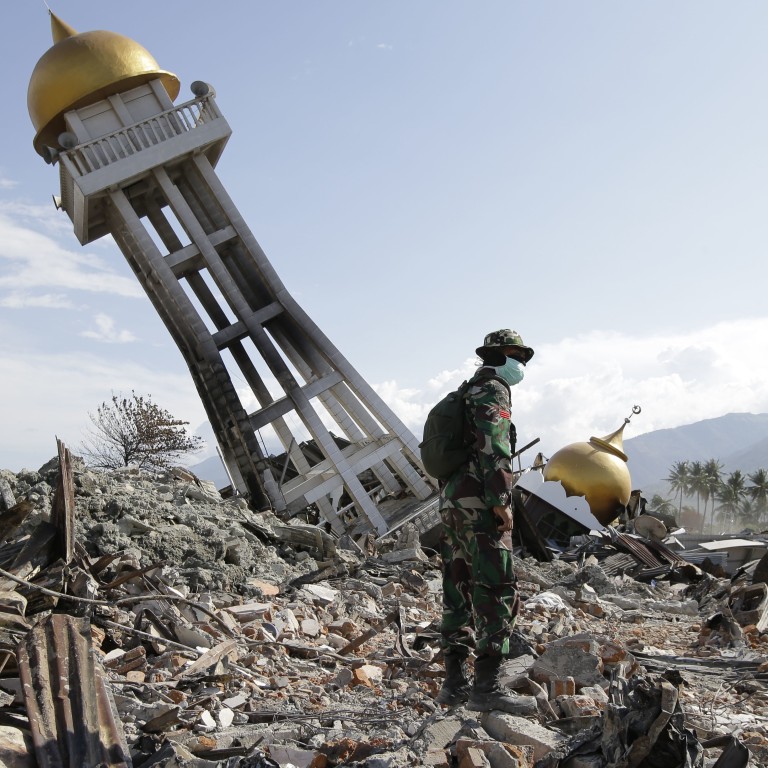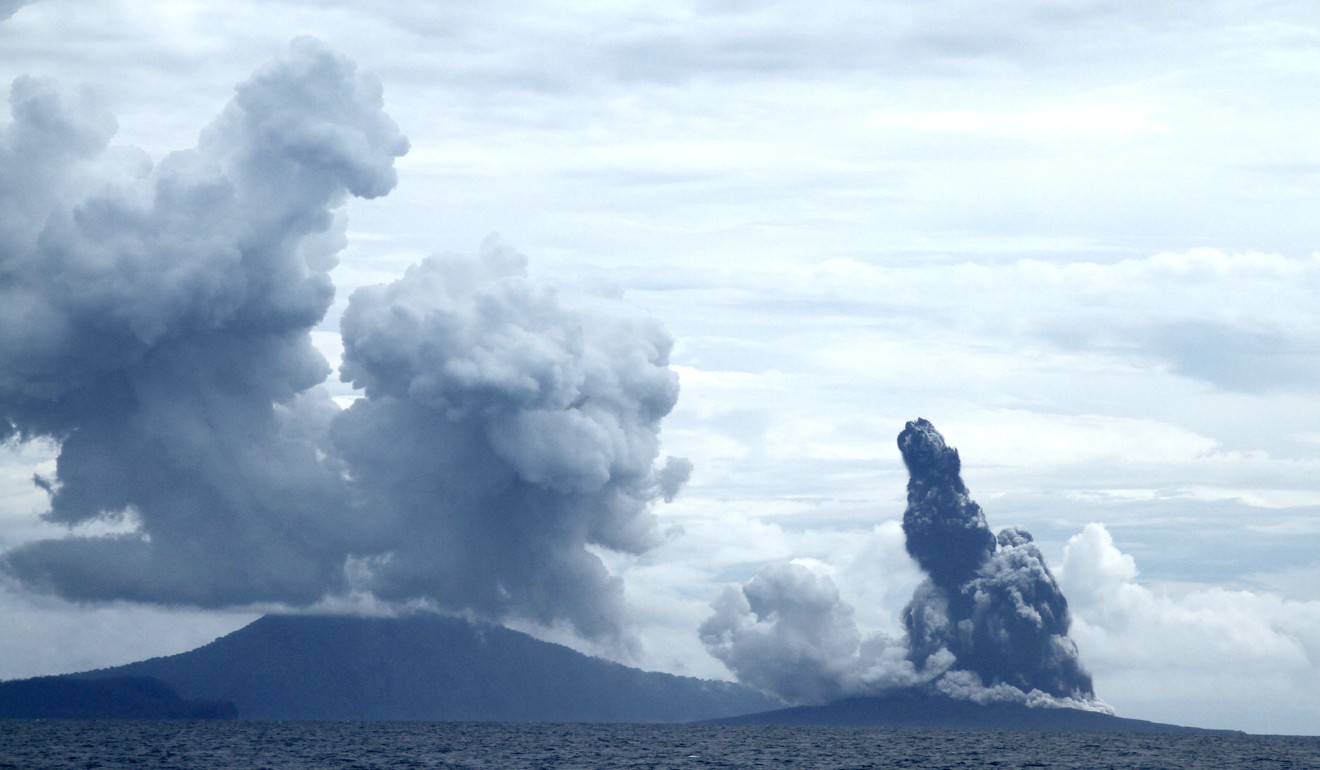
Indonesia’s plans for ‘new Bali’ tourism push derailed by disasters
- The government picked Tanjung Lesung and nine other locations as part of its strategy, a plan unveiled in 2016 with an eye to courting Chinese, Singaporean and other investors
- Indonesia’s tourism numbers plunged in the second half of 2018 after the Lombok quakes, a quake-tsunami disaster on Sulawesi island and a Lion Air plane crash in October
Picture-postcard Tanjung Lesung was a cornerstone of Indonesia’s bid to supercharge its tourism industry, boasting palm-fringed beaches, a towering volcano in the middle of turquoise waters and a rainforest sanctuary for endangered Javan rhinos.
But the beachside town now lies in ruins, pummelled by a deadly tsunami that has raised fresh questions about disaster preparedness and the future of a multibillion-dollar push to replicate Bali’s success across the Southeast Asian archipelago.
Several members of the Indonesian band Seventeen and more than 100 others at the Tanjung Lesung Beach Hotel were killed – about a quarter of those who died in the volcano-triggered tsunami.
A clutch of other area hotels was also devastated, with beachside cottages flattened and debris – chairs, tables and the band’s audio equipment – scattered everywhere.
Tourism minister Arief Yahya, who ordered that the town be rebuilt in six months, brushed aside concerns sparked by the tsunami – which was triggered by a sudden eruption of the Anak Krakatoa volcano.
“Disasters can happen anywhere in Indonesia,” he said during a recent visit. “We need to have [tsunami] early warning systems, especially in tourist destinations. We’re going to make that happen.”

But some are less convinced, especially since disaster monitors became aware of the killer waves after they had already smashed into the coastline along western Java and southern Sumatra.
“It’s going to be even more difficult to promote [the area], especially now that buildings are destroyed and the volcano is more active,” said Tedjo Iskandar, a Jakarta-based travel analyst.
About 42 per cent of Indonesia’s 14 million foreign tourists headed to the popular resort island of Bali last year, giving a US$17 billion boost to Southeast Asia’s biggest economy.
The government picked Tanjung Lesung and nine other locations as part of its “10 New Balis” strategy, a plan unveiled in 2016 with an eye to courting Chinese, Singaporean and other investors as its pushes to hit 20 million tourists annually.
The list includes ancient Buddhist and Hindu temples, tropical islands near Jakarta, the Mount Bromo volcano in eastern Java, and a national park that is home to Komodo dragons – the world’s biggest lizard. But the killer tsunami has dealt a blow to plans to pump some US$4 billion into Tanjung Lesung.
We need to have [tsunami] early warning systems, especially in tourist destinations
It is not the only spot in the government’s tourism plan to suffer a disaster – natural or man-made – that could scare away tourists.
Lombok, next to Bali, was rocked by earthquakes in the summer that killed more than 500 and sparked a mass exodus of foreigners from the tropical paradise. That was weeks after Lake Toba on Sumatra island – also on the “New Bali” list – was the scene of a ferry accident that left almost 200 people missing or dead.
In May, Indonesia’s second-biggest city Surabaya was hit by suicide bombings carried about by Islamist extremists, while Bali was rocked as the Mount Agung blew its top at the end of 2017.
The volcano is 75km away from tourist areas and the eruption posed little danger to visitors, but it still left hundreds of thousands stranded as flights were cancelled.
Indonesia’s upbeat tourism numbers plunged in the second half of 2018 after the Lombok quakes, a quake-tsunami disaster on Sulawesi island that killed thousands, and a Lion Air plane crash in October which killed all 189 people on board.

Indonesia is one of the most disaster-prone nations on Earth, straddling the Pacific Ring of Fire, where tectonic plates collide.
And the frequent disasters it has suffered recently have highlighted the country’s woeful state of preparedness.
Early warning systems in the city of Palu on Sulawesi – and elsewhere – had not been working since 2012 because of budget shortfalls and bureaucratic bungling.

In the latest disaster in the Sunda Strait, Indonesian monitors initially said there was no tsunami threat at all. They were later forced to issue a correction and an apology, pointing to a lack of early warning systems for the high death toll.
Jakarta’s tourism push may still have a chance, but only if it gets serious about safety, said I Ketut Ardana, head of the Association of Indonesian Tour and Travel Agencies’ Bali office.
“The [government] needs to better inform locals and tourists so they’re prepared when a disaster strikes,” he said.

.png?itok=arIb17P0)